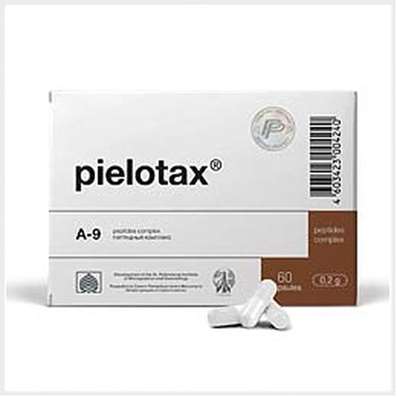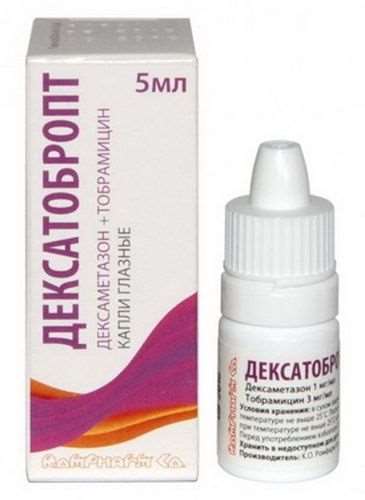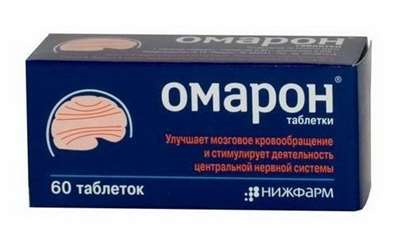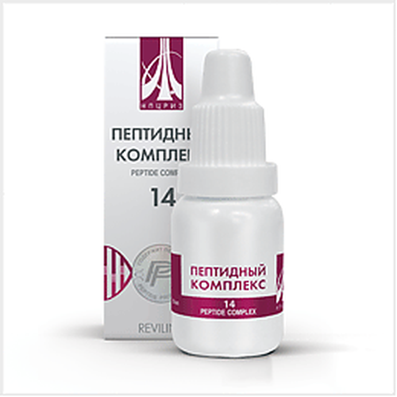Instruction for use: Oftan Pilocarpin
I want this, give me price
Active substance: Pilocarpine
ATX Code
S01EB01 Pilocarpine
Pharmacological group
M Holinomimetiki
Ophthalmic products
Nosological classification (ICD-10)
H40.0 Suspected glaucoma
Marked rise in intraocular pressure, Hypertension eyes, ocular hypertension, Measurement of intraocular pressure, ophthalmohypertension, Elevated IOP, Elevated intraocular pressure, Elevated intraocular pressure in infectious diseases of the eye, Povyshennore intraocular pressure, Increased ophthalmotonus, Spontaneous blockade angle opposite eye, Narrow chamber angle, Iatrogenic, blockade angle opposite eye
H40.1 Primary open-angle glaucoma
open-angle glaucoma, Open-angle glaucoma, Primary glaucoma, pseudoexfoliation glaucoma, Elevated IOP
H40.2 Primary angle-closure glaucoma
closure Glaucoma, Glaucoma with a narrow angle of anterior chamber, Angle-closure glaucoma, Acute angle-closure glaucoma, An acute attack of angle-closure glaucoma, Elevated intraocular pressure angle-closure glaucoma, Chronic angle-closure glaucoma
T44.3 Poisoning with other parasympathetic [anticholinergic and antimuscarinic] and antispasmodic agents not elsewhere classified
Poisoning with anticholinergic, antimuscarinic and antispasmodic agents, Anticholinergic poisoning, Atropine poisoning
Z01.0 eye exam and vision
Angioscopy vasculature of the fundus, Angioscopy iris, Diagnostic scraping of the conjunctiva, US eyes, pupil dilation
Z100 * CLASS XXII Surgical practice
Abdominal surgery, adenomectomy, Amputation, Coronary angioplasty, Angioplasty of the carotid arteries, Antiseptic skin treatment for wounds, Antiseptic Hand, Appendectomy, atherectomy, Balloon coronary angioplasty, Vaginal hysterectomy, The coronary bypass, Interventions in the vagina and cervix, Interventions on the bladder, Intervention in the mouth, Restoration and reconstructive surgery, Hand hygiene of medical personnel, Gynecologic surgery, Gynecological intervention, Gynecological surgery, Hypovolemic shock during operations, Disinfection of purulent wounds, Disinfection of wounds edges, Diagnostic intervention, Diagnostic procedures, Cervical Diathermocoagulation, Long-surgery, Replacing the fistula catheters, Infection in orthopedic surgery, Artificial heart valve, cystectomy, Short-term outpatient surgery, Short-term operation, Short surgical procedures, Krikotireotomiya, Blood loss during surgery, Bleeding during surgery and in the postoperative period, Kuldotsentez, laser photocoagulation, laser coagulation, retinal laser coagulation, Laparoscopy, Laparoscopy in Gynecology, CSF fistula, Small gynecological operations, Small surgical procedures, Mastectomy and subsequent plastic, mediastinotomy, Microsurgical operations on the ear, Mukogingivalnye operation, suturing, Minor surgery, neurosurgical operation, Immobilization of the eyeball in ophthalmic surgery, testectomy, pancreatectomy, Perikardektomiya, The period of rehabilitation after surgery, The period of, convalescence after surgery, Percutaneous transluminal coronary angioplasty, Pleural thoracentesis, Pneumonia postoperative and posttraumatic, Preparation for surgical procedures, Preparation for surgery, Preparation of the surgeon's hands before surgery, Preparation of the colon for surgical procedures, Postoperative aspiration pneumonia in neurosurgical and thoracic surgery, Postoperative nausea, Postoperative bleeding, postoperative granuloma, postoperative shock, The early postoperative period, myocardial revascularization, Radiectomy, gastric Resection, bowel resection, uterine Resection, liver Resection, enterectomy, Resection of part of the stomach, Reocclusion of the operated vessel, Bonding tissues during surgical procedures, Removal of sutures, Condition after eye surgery, Condition after surgery, Condition after surgery in the nasal cavity, Condition after gastrectomy, Status after resection of the small intestine, Condition after tonsillectomy, Condition after removal of the duodenum, Condition after phlebectomy, Vascular surgery, Splenectomy, Sterilization of surgical instruments, Sterilization of surgical instruments, sternotomy, Dental surgery, Dental intervention in periodontal tissues, strumectomy, Tonsillectomy, Thoracic surgery, total gastrectomy, Transdermal intravascular coronary angioplasty, Transurethral resection, Turbinektomiya, Removal of a tooth, cataract surgery, Removal of cysts, tonsillectomy, Removal of fibroids, Removing the mobile primary teeth, Removing polyps, Removing broken tooth, Removal of the uterus body, Removal of sutures, Urethrotomy, Fistula likvoroprovodyaschih ways, Frontoetmoidogaymorotomiya, Surgical infection, Surgical treatment of chronic limb ulcersm, Surgery, The surgery in the anal area, The surgery on the colon, Surgical practice, The surgical procedure, Surgical interventions, Surgery on the gastrointestinal tract, Surgical procedures on the urinary tract, Surgical procedures on the urinary system, Surgical intervention of the genitourinary system, Surgical procedures on the heart, Surgical manipulation, surgery, Surgery on the veins, Surgical intervention, Vascular surgery, Surgical treatment of thrombosis, cholecystectomy, Partial gastric resection, transabdominal hysterectomy, Percutaneous transluminal coronary angioplasty, Percutaneous transluminal angioplasty, Coronary artery bypass, tooth Extirpation, Extirpation of milk teeth, pulpectomy, pulsative cardiopulmonary bypass, tooth Extraction, teeth Extraction, cataract extraction, Electrocoagulation, endourological intervention, episiotomy, Etmoidotomiya, Complications after tooth extraction
Composition and form of release
Eye drops 1 ml
pilocarpine hydrochloride 10 mg
Excipients: benzalkonium chloride - 40 mg; polyvinyl alcohol; Citric acid (monohydrate); sodium citrate; water for injections
plastic flakonah- 10 ml; in box 1 bottle.
The drug forms
The clear, colorless solution.
Characteristic
Cholinergic agent, stimulating the muscarinic receptors.
pharmachologic effect
Mode of action - antiglaucoma, m-cholinomimetic.
It causes pupil constriction and reduces the intraocular pressure by improving outflow of intraocular fluid.
Pharmacodynamics
In open-angle glaucoma intraocular pressure reduction is mainly due to relief of outflow of aqueous humor. In closed-form pupil constriction leads to disclosure of rosy-corneal angle and increase the outflow of aqueous humor. Effect of the drug on intraocular pressure lasts from 4 to 14 hours.
Pharmacokinetics
It penetrates through the cornea, the Cmax in the aqueous humor of the eye is achieved after 30 minutes. Associated many tissues of the eye, the T1 / 2 of the eye, is 1.5 to 2.5 hours. Do not metabolized in the aqueous humor, is displayed at its outflow.
Indications
Primary open-angle glaucoma, angle-closure glaucoma, including treatment of an acute attack of angle-closure glaucoma. An examination of the eyes to narrow the pupil, for the treatment of symptoms caused by an overdose of mydriatics (the drug has an effect opposite to mydriatic and means relaxing the ciliary muscle).
Contraindications
Iritis, iridocyclitis, and other conditions that are not recommended constriction of the pupil (for example, after surgery on the eye, except when it is necessary to narrow the pupil immediately after surgery to prevent the formation of adhesions), hypersensitivity to pilocarpine, used with caution in patients with retinal detachment history and in young patients with high myopia.
pregnancy and lactation
It is considered relatively safe in pregnancy and during breastfeeding, although these clinical trials have been conducted.
Side effects
Local: short-term pain in the eye, redness and burning sensation, blurred vision especially at night. Chance of spasm of accommodation, especially in young patients, headache and increased lacrimation, conjunctivitis, allergic dermatitis and skin century.
Systemic side effects are rare.
Cardio-vascular system: slowing of heart rate.
From the respiratory system: bronchospasm, rhinorrhea.
From the digestive tract: increased salivation.
In rare cases described retinal detachment, sealing or iris cyst formation in connection with the use miotikov. Long-term treatment may cause the development of follicular conjunctivitis and reversible cataract, keratopathy.
Interaction
It goes well with beta-blockers and other antihypertensive drugs for the treatment of glaucoma. Possible joint use of carbonic anhydrase inhibitors in relieving acute attack of angle-closure glaucoma. Atropine and other m-holinoblokatory - pilocarpine antagonists. Tricyclic antidepressants, phenothiazines, Chlorprothixenum, clozapine reduced, and anticholinesterase agents enhance the m-cholinomimetic activity. During general anesthesia with halothane may reduce blood pressure and bradycardia.
Dosing and Administration
Kongungualno. Primary glaucoma: 1 drop in the affected eye 2-6 times a day (daily dose and concentration establishes a doctor depending on the level of intraocular pressure).
An acute attack angle-closure glaucoma: during the first 1-2 hours - every 15 minutes 1 drop 3-4 th hour - every 30 minutes 1 drop 5-6 th hour - one hour instillation.
Overdose
There may be nausea, bradycardia (characterized by low systemic bioavailability and rapid clearance from the bloodstream: the drug was administered 20 drops per hour without the express systemic side effects).
Treatment: symptomatic. The specific antidote - atropine. In severe bradycardia - atropine 0.5-2 mg parenterally.
Precautionary measures
Be careful when driving at night or in low light.
Storage conditions
At a temperature of 2-15 ° C.
Keep out of the reach of children.
Shelf-life
2 years. After opening the bottle - 1 month.
Do not use beyond the expiration date printed on the package.

 Cart
Cart





